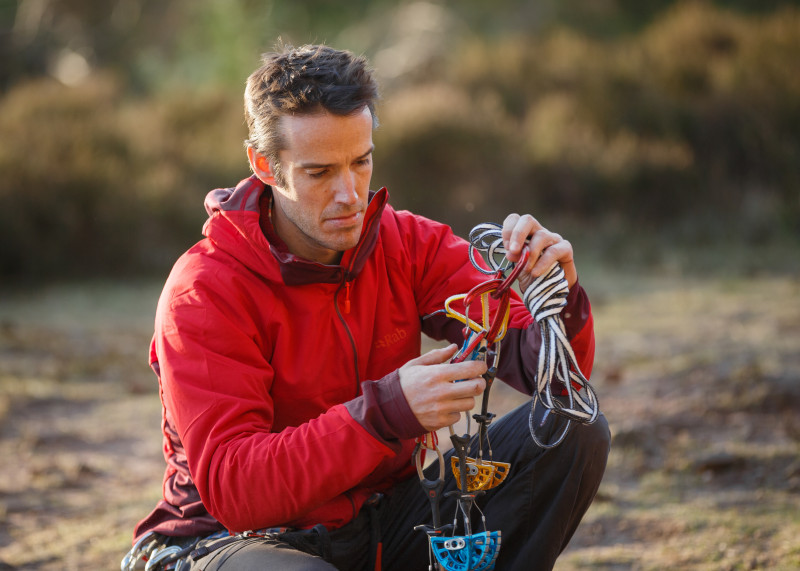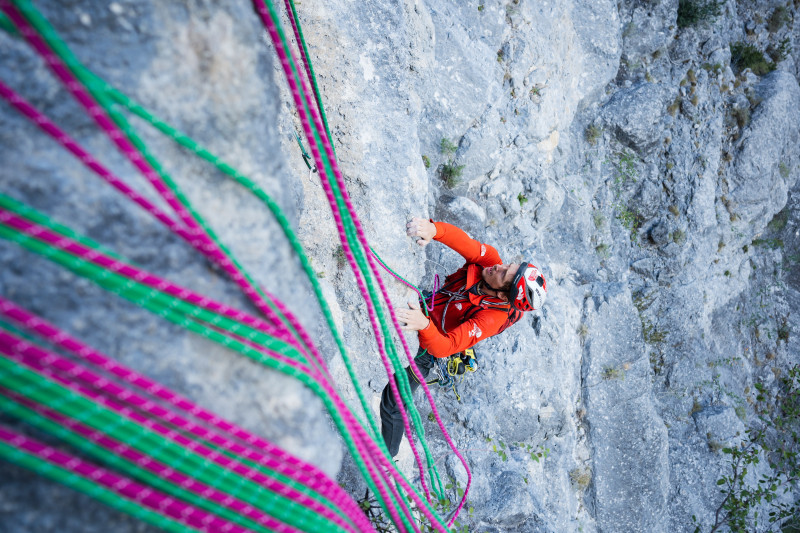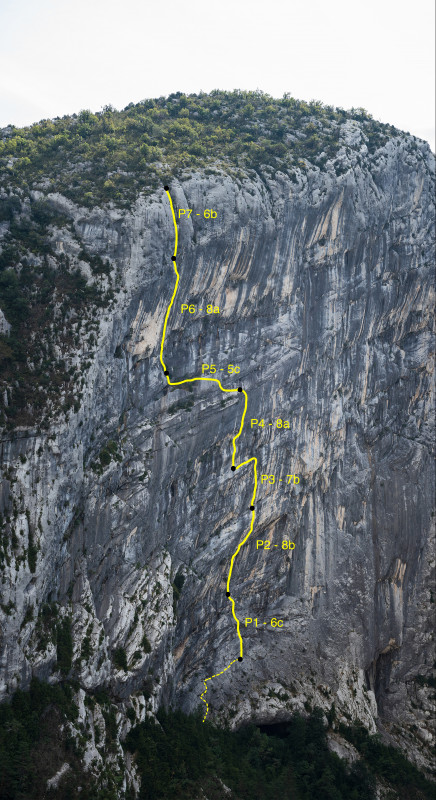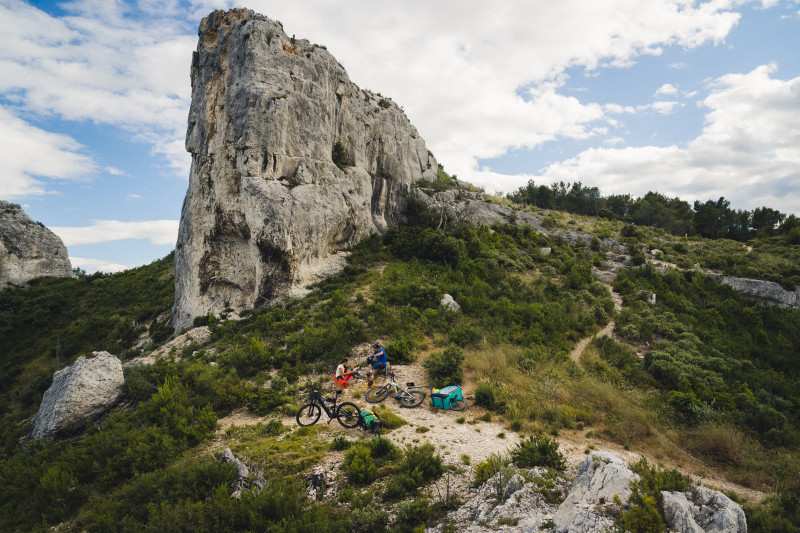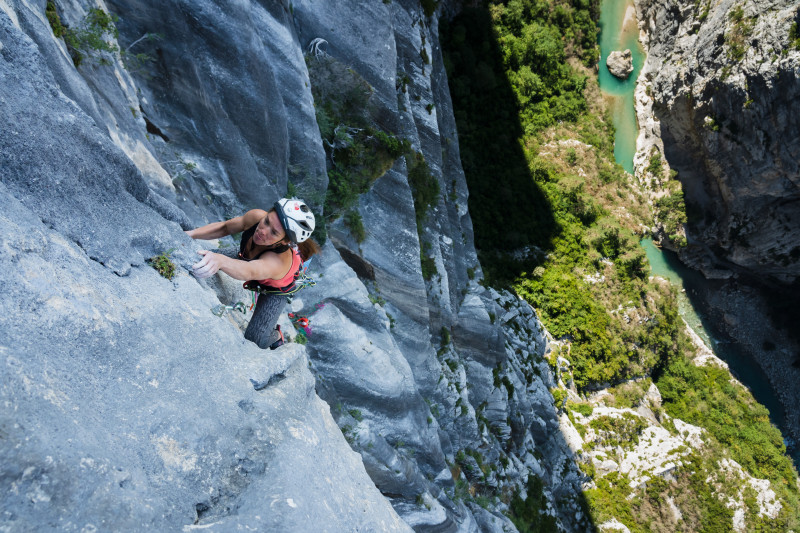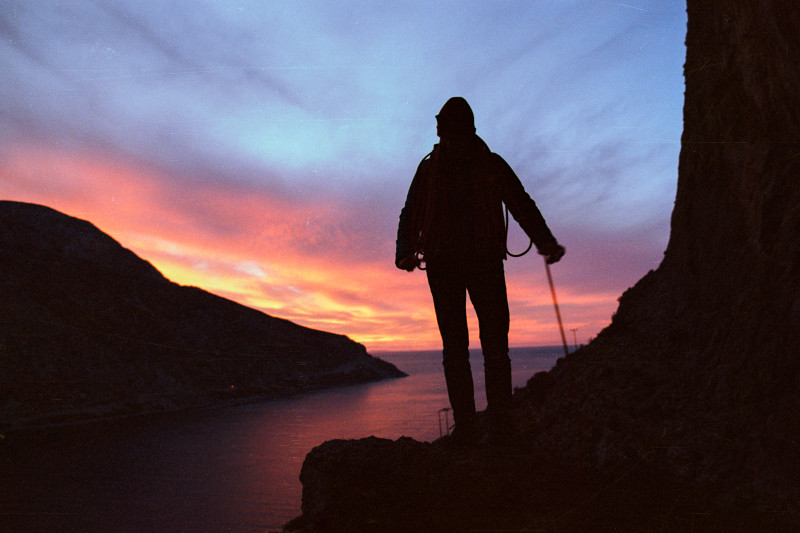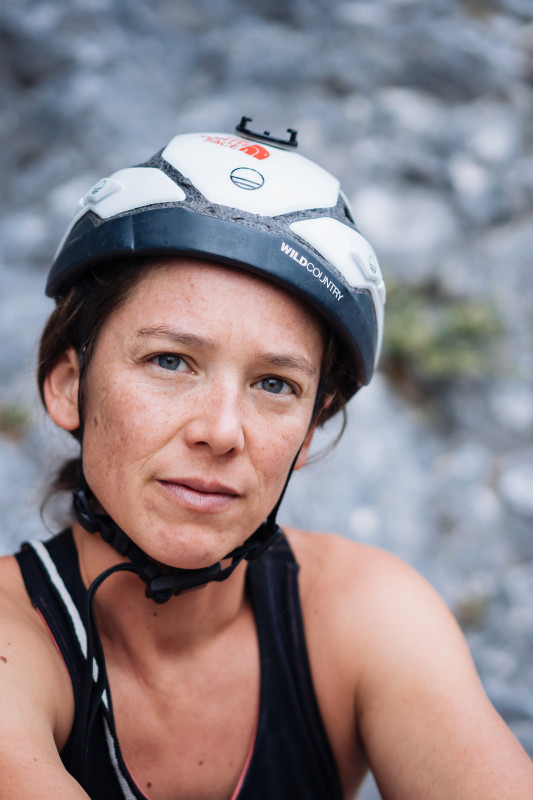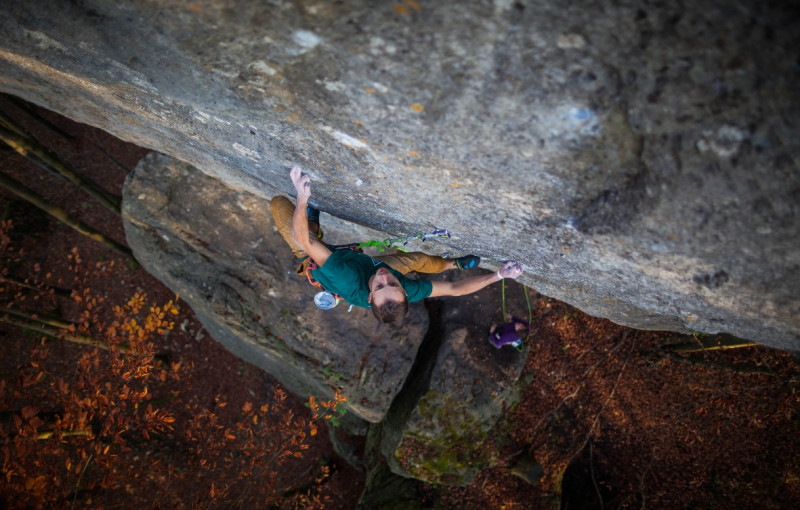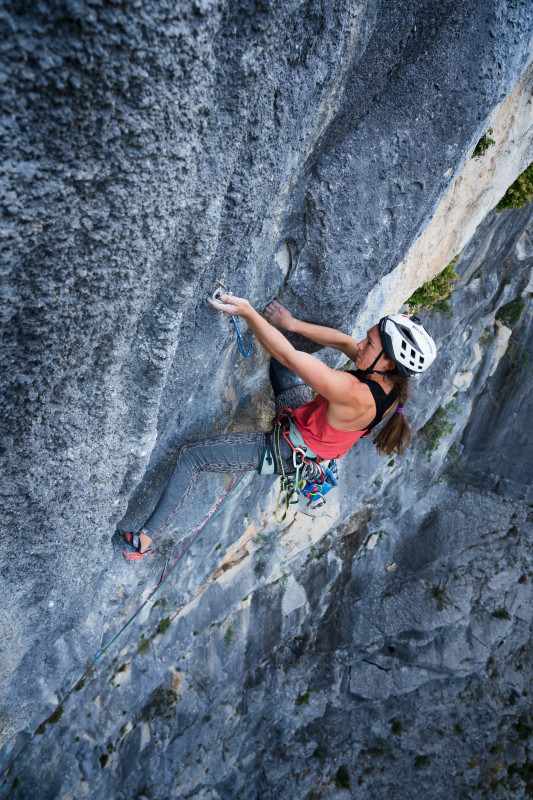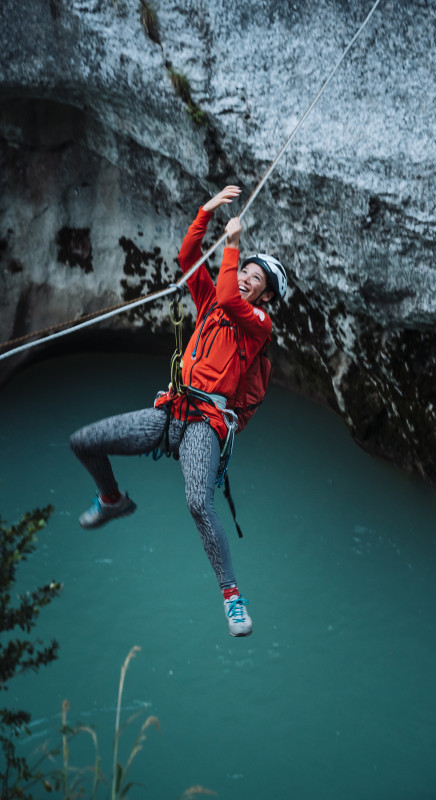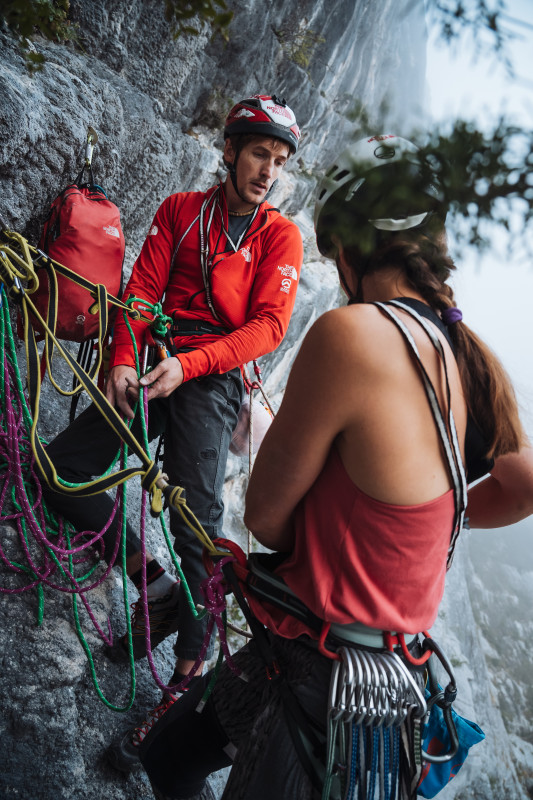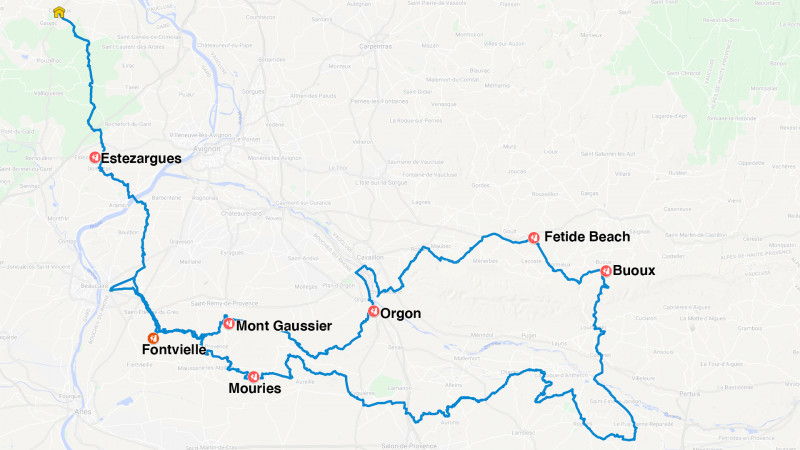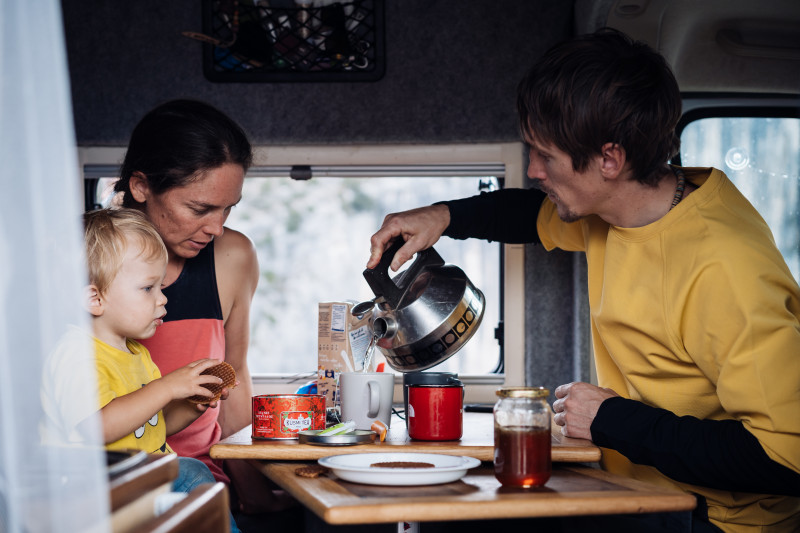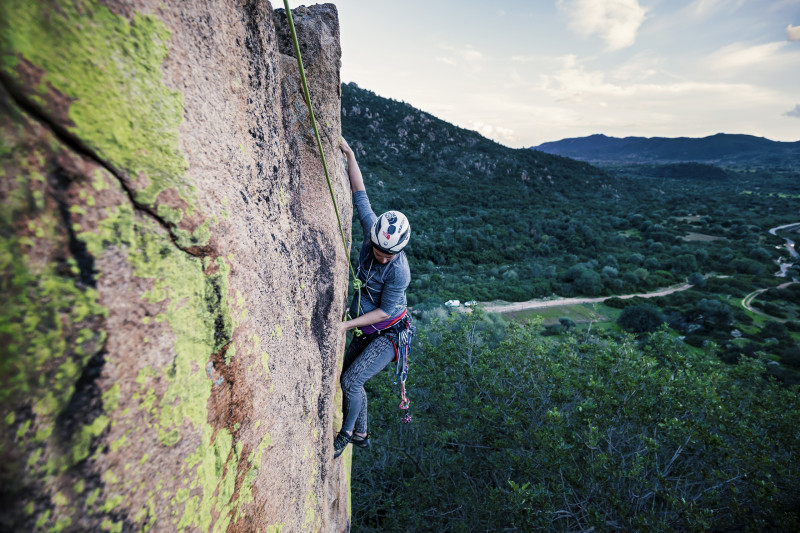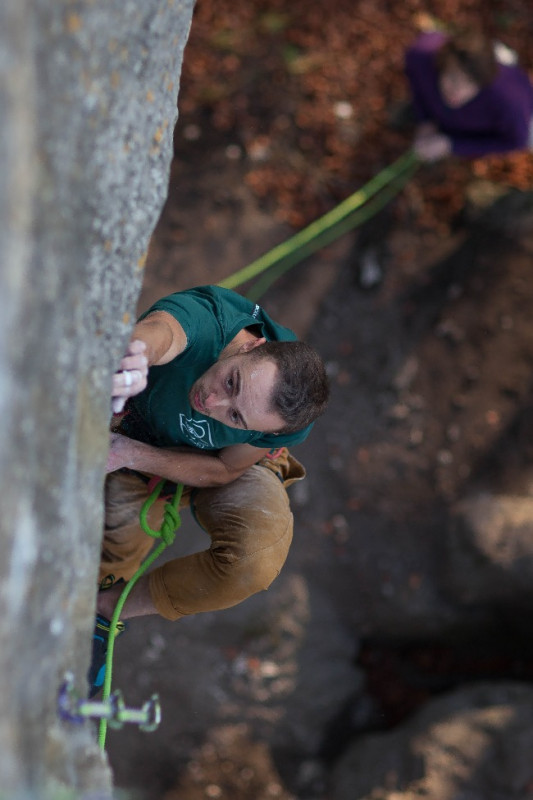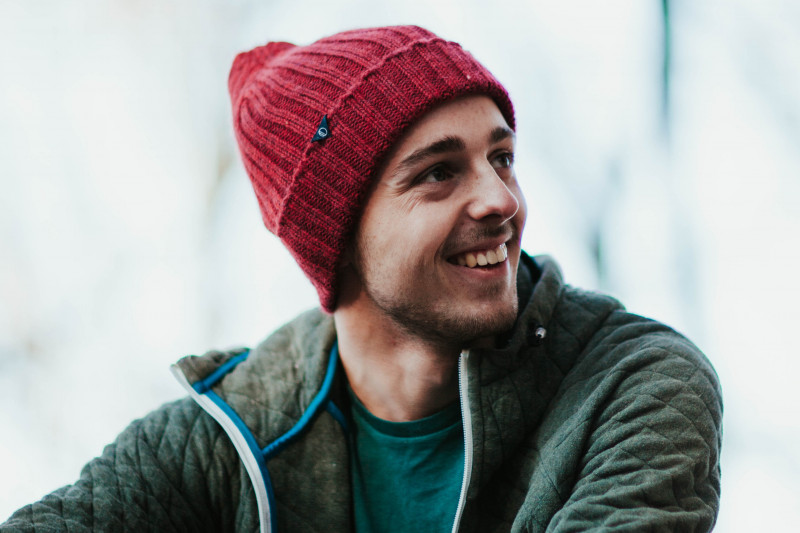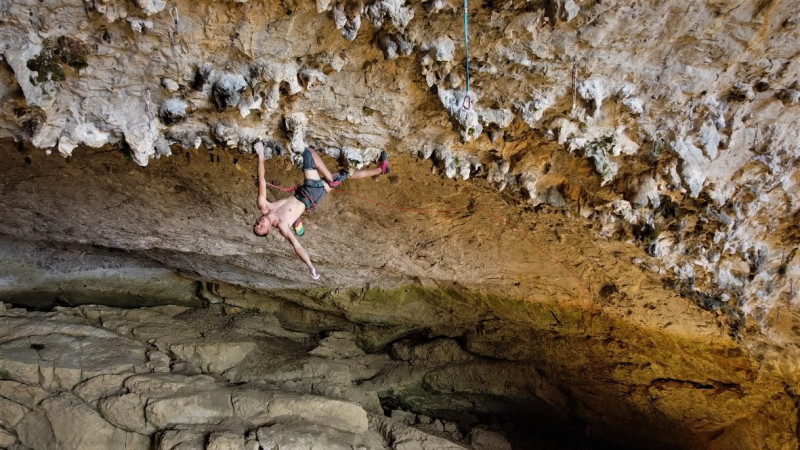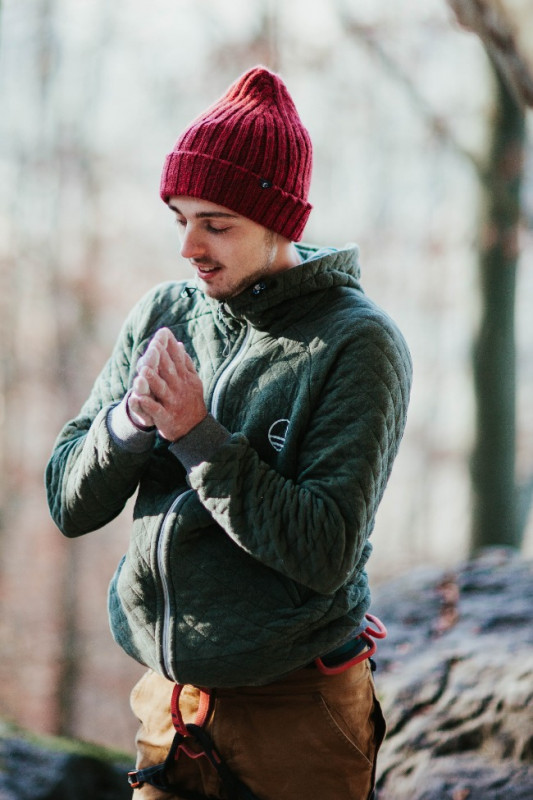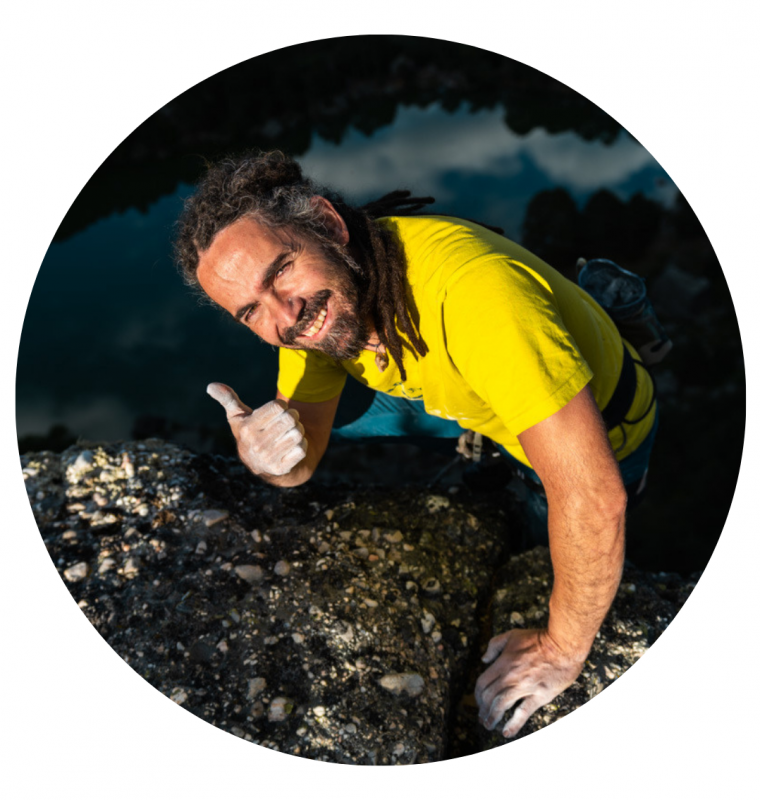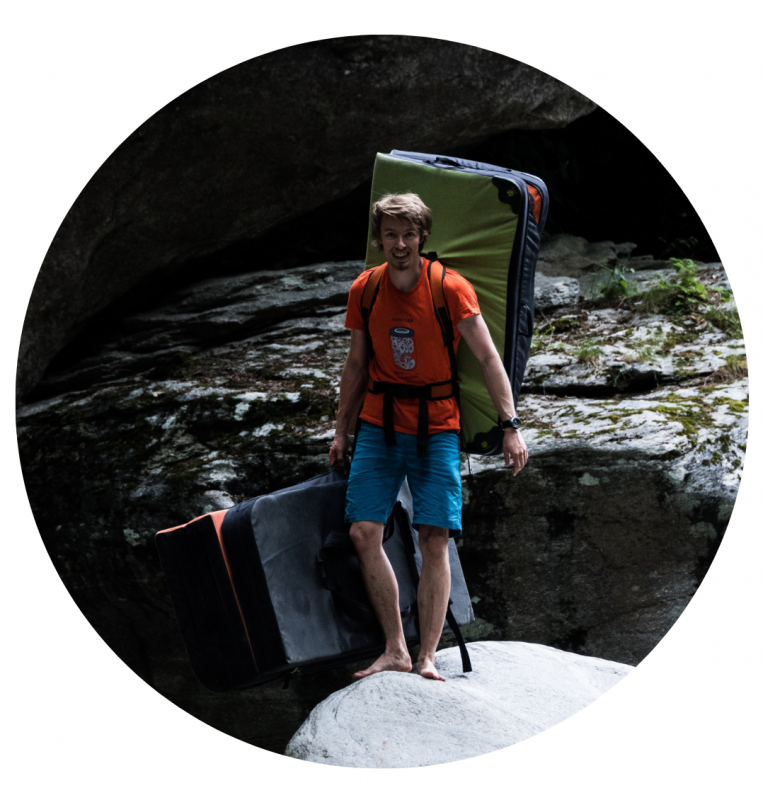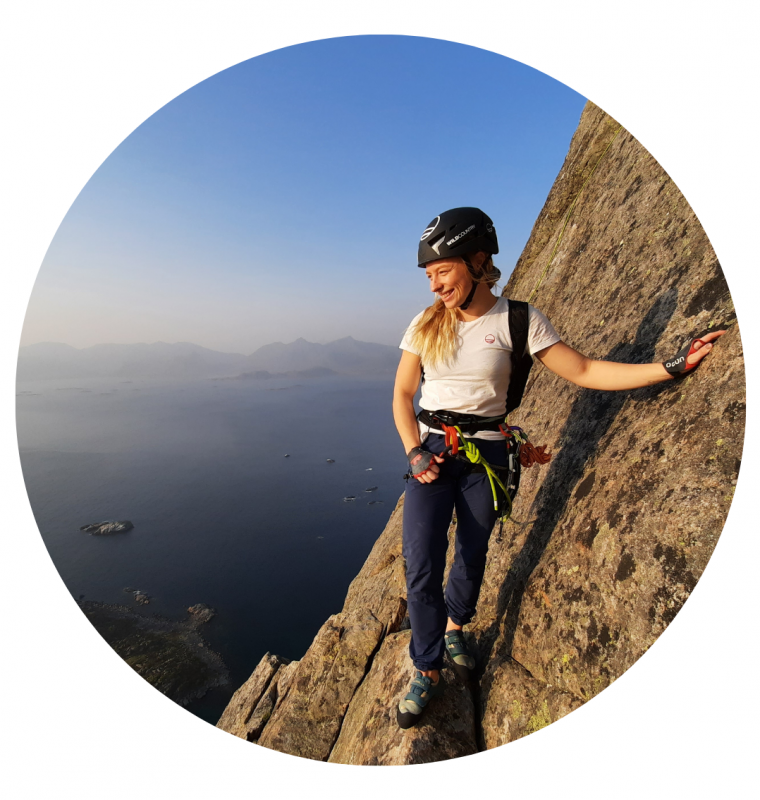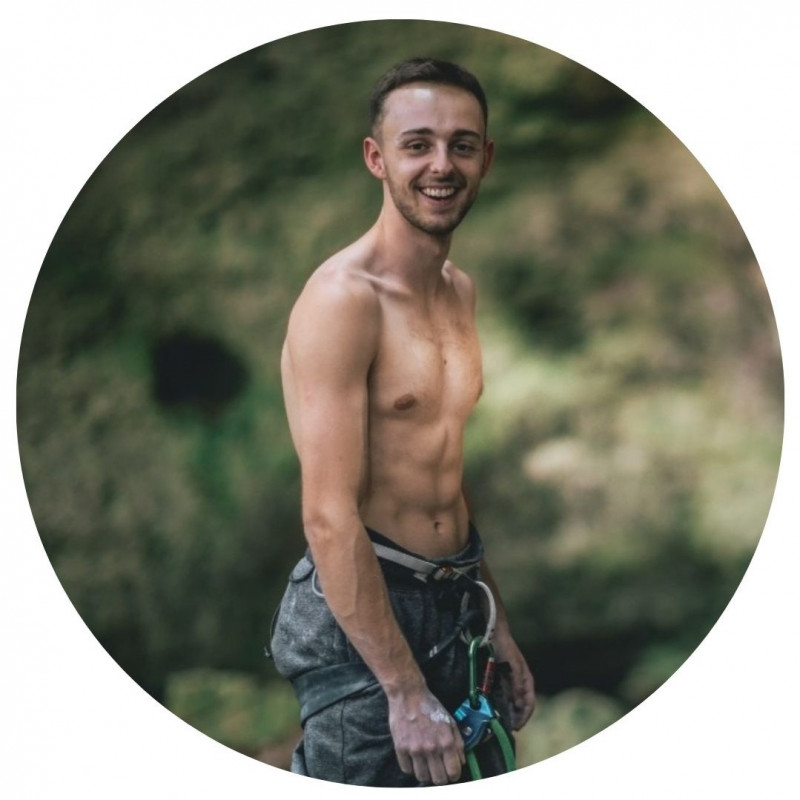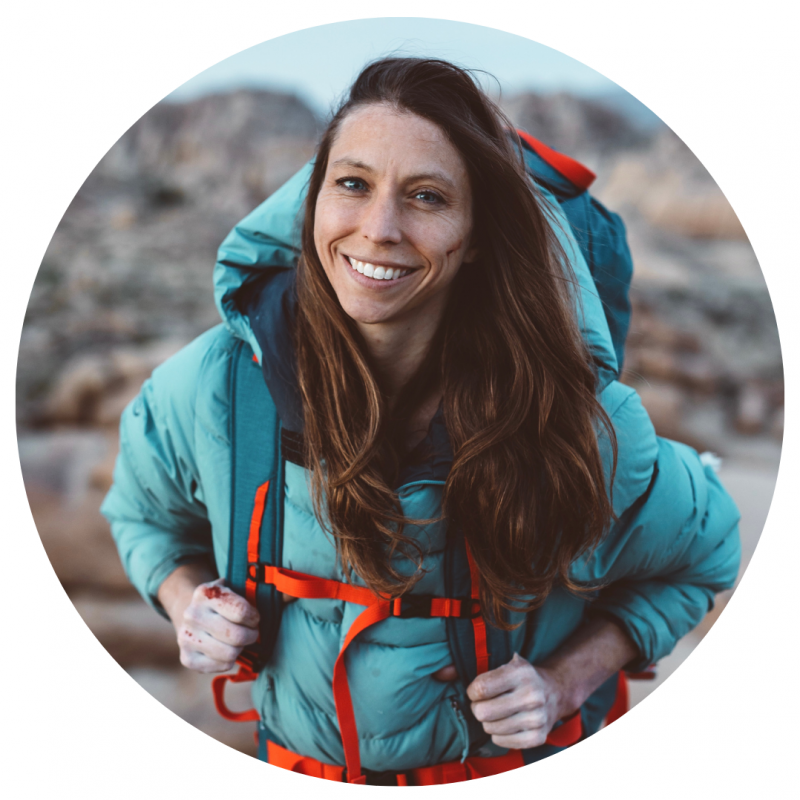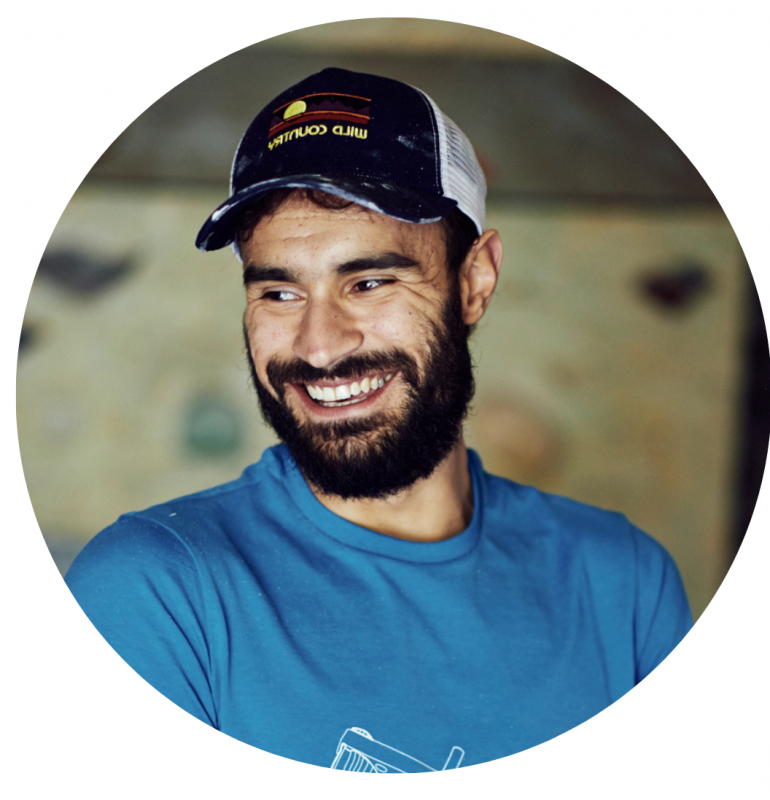9A’s, TRAVEL, & FUTURE CLIMBERS
We sat down with Moritz Welt to Talk Climbing
5.0 minute read
Hey, Moritz, how are you doing these days?
Quite well. After a great time in Slovenia, I'm back home and back to studying, even if it is "only" online. I am in the second semester of a Bachelors's in Math. I was only physically present in the university itself at the beginning for two weeks, though. After that, everything was switched to online.
There are some climbers who have studied math or similar. Alex Huber, for example, is a physician.
True, Kurt Albert was also a mathematician, and Thomas from Bamberg is an astrophysicist.
In your opinion, is there a connection? Are climbers problem solvers?
What's definitely true is that climbing is extremely analytical. You're extremely busy memorizing all the moves and figuring out the smallest details. I think that has certain parallels to the natural sciences.
What were the decisive points for Osp and Slovenia? Certain routes? Fewer restrictions?
I've been there three times now, and I've always liked it extremely well. It is one of the spots where I feel totally comfortable, it is beautiful, nice, and cozy, almost no approach, and despite its small size, there are highly difficult tours that are highly funny.
Do you have the impression that destinations are consciously chosen according to routes and marketability nowadays, or even in your generation? And have you already had such considerations?
It's actually not nice to think that way. But I must admit that I have often caught myself doing that. The thought of going to Spain and projecting 9a+ or 9b, and also doing a well-known tour that would probably be outstanding in terms of image and marketing. But on the other hand, it is then much nicer to do what you just want to.
This is precisely what I found when I stepped onto the route. After the initial (6c) pitch, I put my hands on what I discovered to be a 40-meter, full endurance (8b) on tuffas. This pitch is varied, technical, and pumpy. After working the moves, I knew right away I was lucky to have chosen such a beautiful route; this single pitch at any crag would be a must-do, 5-star. As I took in the rope with a smile, I could hear my second’s agreement as he worked the moves with exclamations of delight! The (7b) pitch is a long stunning colonnette, and then there are the two magnificent (8a)’s on tuffas. The easier traverse and top pitch might not deserve too much celebration, but they allow you to link between four incredible pitches.
Working on Une Jolie and figuring out every detail, I couldn’t help but remember my adventure on the Voie Petit (500m, 8b max) back in 2016. At altitude, above a glacier, and on granite, these two routes have little in common, but my process was just the same. Negotiating with my fear 300 meters up a new wall is always an intimidating position, especially my fear of failing. I had to refocus on the pleasure and enjoy it. After all, I was abandoning my kid for a full day, so I had better make it a worthwhile success.
My achievement wouldn’t come through a grade, though; for a long time, I have realized grades are all relative. At the end of the day, it doesn’t matter if it is a 9c or 7c; no one cares! It’s only climbing. It can only be for MY pleasure that I decide to put myself through fear, tiredness, and then, hope, and belief, which all turn into a passion. Of course, over the two days that I worked the route, I had quite a few moments where I despaired in figuring out a method. I also went to bed those nights, asking myself why I was doing this. But then, waking up at 5 am to beat the afternoon sun, I itched to put my hands on the rock, savored the idea that I could only rely on myself to get the rope up; this project reawakened the climber that I am.
I came home with precise sequences in my head and the knowledge that if I trained, visualized, and prepared, I had a chance to link it all. I knew training would be challenging, especially motivating for another endurance lap through the summer heat. But I was finding myself again, finding my space to be a climber and a good mum.
I returned to the route with James a month later while the grandparents took care of Arthur. Part of me wondered why we were leaving our baby, and we both felt a bit empty without him jumping around the van. But then in the early morning, I put my game face on, James transformed into Mr. Perfect Belayer, and the fun began. In the (8b), I had no idea if I had the necessary endurance, but in a month’s training, I had noticed that it was all coming back quickly. I climbed precisely without a single mistake. I have no idea how it happened–maybe being a parent and having little time forced me to improve my efficiency. The (7b), the first (8a), the (5c) it all went smoothly. Then, in the last (8a), I made a few mistakes. I forgot a few methods, and there was a moment at the very end, where I realized I had to make the right decision very fast, or I would be off, and maybe not have the energy to try the pitch again.
It is here that I faced my old friend, the fear of failing; every climber has to find a way of dealing with this. When I was a competition climber, I used to tell myself to focus closer on the pleasure of the movements. This time, with my forearms about to explode, and while I was struggling to slow my breathing on a relatively restful tuffa, I could see in my mind Arthur dancing to his favorite music. With that, I realized that falling would be ok; failing was indeed not that sad. Accepting the possibility of not doing it gave me the energy to finish the pitch and scrape my way to the belay. One more (6b), and I had done it, I was again the climber I wanted to be! I had proven to myself that there was a balance between being a mum and a climber. That even the joy of my little one could give me strength for climbing that I hadn’t had before.
I'd love to tell you James and I drove back home playing Une Jolie, but that would be too whimsically poetic. After all, ticking the climb for its name or notoriety is not the experience I was after. Plus, James hates the song, but James's story of understanding French poetry, and as I say, “truly” becoming French, is another story altogether.
Written by Moritz Welt
Photos by Lars Decker & Miro Enzenberger
Video by Miro Enzenberger (edit Moritz Welt)
Stage 6- Buoux
We stayed four days at the "Auberge des Seguins," which is a perfect location to go to the crags on foot. They even let us take our dinners outside by the bedroom while the baby was already in Bed. Buoux doesn't need any publicity. It is a unique, incredible crag, and there is a reason for its Fame. Buoux is a Must visit". No matter what your level is, you will find a gem to climb!
Stage 7- Mouries
Mouries is a long way from Buoux, and we had initially planned some extra stops. But the heatwave had begun, and the other planned spots were not as exciting. So, instead of climbing stops, we biked for two days, visited an abandoned troglodyte village (les grottes de cales), and loved it!
Mouries again is an old lady, and if you can get away from requiring extremely tough grades and enjoy the technical climbing, you will love it. Mouries is a climbing lesson in itself.
Stage 8- Fontvieille secret crag
I can't tell you the secret crags, as they are secret because they aren't technically allowed. To find them you have to ask as you meet climbers on your previous days and if you are lucky they may tell you the secrets! France is full of them, and sometimes these are the best crags!
We arrived back home after 25 days of traveling and climbing. It wasn't always restful, but then living with a baby is never restful! Every day brought us load of discoveries, from a wild tortoise to incredible pains au chocolates, to meeting an old friend. Baby Arthur loved it. The minute we stepped back in the house, he was pointing again at the window, asking, "where next?" For James and me, we finish this adventure delighted to have realized that we still have so much left to explore, and it is all less than 100km from our home. This bike and climb trip is only the first!
Climbing has become a competitive sport, with all its facets, be it performance pressure, competition, sponsorships. How do you see that?
You read a lot of news lately about young climbers who suddenly are crushing hard grades, and I sometimes think to myself that I have to follow up, deliver something special. But you shouldn't think like that. And I try to stay really relaxed. When I feel like I'm stressing myself too much, or I'm just thinking about how this would look and what I should do, I can control myself pretty well and think about what I really want to do; especially what could motivate me because I climb better when the motivation comes from the inside and when I'm having fun.
Did you plan to climb both 9a's, Martin Krpan and Halupca 1979?
No. Actually, I went to Mišja Pec because of the Halupca 1979, which I had tried on my last visit two years ago. I knew that it could work out because of the previous attempts. But at the beginning of the trip, we have often been in the sector of Martin Krpan, so it was obvious to try it. And then, it became my first project, and I was able to climb it first. Of course, I had them before the trip already on the radar, but it was planned differently. But I'm glad that then both have worked out.
Are the tours different or similar because of the area?
They are very different. The Martin Krpan is a combination of two other routes, many open holds, and a very pressy crux on underclings. In contrast, the Halupca 1979 is a 3-dimensional roof climb on stalactites. However, both require high strength endurance, as they both have hard single boulder problems where you arrive quite pumped.
As a Franken climber, do you struggle with endurance? The crags in your area are known for their shortness.
Of course, when I climb in the Franconian, I train maximum strength and strength for single moves. But I have made the experience that when I am somewhere else for a week or two, the endurance builds up almost automatically. Maximum strength is also a long-term topic. You build it up slowly, and it goes away just as slowly. Endurance comes and goes much faster.
In the hard routes, the holds are almost "jugs" compared to Franconia. That's what I really like there and it's almost comfortable.
SHARE ON
SHARE ON
The route is a 7-pitch (8b), and 6-months after having a baby, the idea of achieving this was going to be my “I am back” diploma. When I chose it, I knew I was on my way back to fitness, and I had just figured out a rhythm where baby let me train and sleep a bit. Fitness isn’t everything, though I also needed focus, dedication, and the will to finish such a route. What I experienced as a young mum was a total shift of focus in my life. Every second of the day, part of my mind was on my little one – Does he need anything? Is he in danger? When baby Arthur was 6-months old, I couldn’t write a full text, read a book, or focus. I willingly disappeared behind “the veil of mum.” But I was hoping I would find my fully functional brain again, on top of my late abdominals.
Is the Martin Krpan as polished as it looks in the video?
Yes (laughs). Very clear, yes. That also made the attempts quite unpredictable. You're always standing on flat, worn-out footholds, and something can smear away at any moment. In the video, you can also see my foot slipping. And that is a huge hole in which you stand perfectly! I had not thought that you could smear out of such a foothold, but I could then, fortunately, balance it well.
What is the difficulty of the tour? What is the crux?
The crux is actually that of an 8c/+ route. If you climb this route on its own, the crux is at the very beginning. The single passage is about fb 7c+ on slopy holds with a lot of pressure on the feet. This route I could climb already in the second attempt. The 9a variant has a difficult part in front of it; about 20 moves 8a+. And by this little bit more of pump, the single passage has become much harder, especially on the slopers. The key then was to climb as efficiently as possible at the beginning.
Is it still difficult after the key section? Is it still possible to drop out at the very top?
Yes, the rest of the route is still 8b, and at this moment, you are already pretty shot. That's why I was glad to have found this kneebar after the crux. Had I also not yet seen with any other
So kneebars or even kneepads are not a discussion for you?
For me, it is the evolution in climbing. What is not okay, of course, is that if someone climbs a boulder that obviously becomes easier as a result and he/she claims the original grade. New technology, modern shoes, or even kneepads are a natural evolution in climbing. But I think that it is not so important for the wide mass of climbers. If, on the other hand, you took a route like Kanal im Rücken (8b) by Wolfgang Güllich in 1984, a kneepad won't help you either. That is still on a different level in terms of footwork and precision. And they climbed it with completely different shoes back then. Vintage tours like this are totally inspiring for me! Kanal im Rücken, for example, has a much higher value for me than some new school 8c in Franconia. The history behind it and literally walking in the footsteps of yesteryear are one thing. But the technical requirements are simply so high that you can't get up there with a lot of power alone. Nowadays, you are able to pump up in no time at all and do steep athletic tours, but you just can't do the stuff from back then.
What is the relationship to difficulty for the younger generation? Twenty years ago, you were still the hero on the crag if you could climb 7c onsight. That's not a number anymore, is it?
Yes, it has evolved incredibly. In the past, if you could climb 8a, you were an outstanding guy. And without sounding condescending, that's nothing special anymore.
Doesn't this also limit the choice of destinations? If your friends want to go somewhere where the routes are too easy for you?
Quite the opposite! I also like to go "pleasure climbing," as I already said I enjoy being on the road with my friends a lot.
What do you remember most from the trip?
Clearly, the relaxed local people. And I really have to emphasize this here: the local scene is so nice and open-minded. And how warmly we were received by the locals was very cool. The interaction among each other is also much more relaxed than in Franconia.
If you are a local Frankenjura climber, then you likely know Moritz Welt. He has been climbing in the area for the past 14 years ticking off routes such as Black Label (8c+/9a), Riders of Doom (8c+/9a), and countless others that add to his laundry list of top climbs. And although one of his driving philosophies is to stay in touch with his home area, he is no stranger to challenging routes around Europe. We sat down with him to talk climbing, training, and his outlook on the new generation of climbers after returning from Osp, Slovenia, with two more 9a's under his belt.
The weekend, days off, our free time – those precious moments we savor to the very last drop.
For some, the pull of climbing has been here your whole life; for others, it is a new pulse, but for nearly all of us, it is a passion that drives us. And while many climbers are reserved to only getting out on the weekends or days off, that is okay. These are the moments that create lasting memories, give us an ever-evolving goal, and provide energy each day we return to work. This is the joy of being a climber and a Weekend Warrior.
To celebrate the Weekend Warrior, we want to share insider tips and stories from around the world, something for your next days off, and to dream about for the future.
Join us in celebrating as we release new episodes and destinations each week through summer 2021.
This is precisely what I found when I stepped onto the route. After the initial (6c) pitch, I put my hands on what I discovered to be a 40-meter, full endurance (8b) on tuffas. This pitch is varied, technical, and pumpy. After working the moves, I knew right away I was lucky to have chosen such a beautiful route; this single pitch at any crag would be a must-do, 5-star. As I took in the rope with a smile, I could hear my second’s agreement as he worked the moves with exclamations of delight! The (7b) pitch is a long stunning colonnette, and then there are the two magnificent (8a)’s on tuffas. The easier traverse and top pitch might not deserve too much celebration, but they allow you to link between four incredible pitches.
Working on Une Jolie and figuring out every detail, I couldn’t help but remember my adventure on the Voie Petit (500m, 8b max) back in 2016. At altitude, above a glacier, and on granite, these two routes have little in common, but my process was just the same. Negotiating with my fear 300 meters up a new wall is always an intimidating position, especially my fear of failing. I had to refocus on the pleasure and enjoy it. After all, I was abandoning my kid for a full day, so I had better make it a worthwhile success.
My achievement wouldn’t come through a grade, though; for a long time, I have realized grades are all relative. At the end of the day, it doesn’t matter if it is a 9c or 7c; no one cares! It’s only climbing. It can only be for MY pleasure that I decide to put myself through fear, tiredness, and then, hope, and belief, which all turn into a passion. Of course, over the two days that I worked the route, I had quite a few moments where I despaired in figuring out a method. I also went to bed those nights, asking myself why I was doing this. But then, waking up at 5 am to beat the afternoon sun, I itched to put my hands on the rock, savored the idea that I could only rely on myself to get the rope up; this project reawakened the climber that I am.
I came home with precise sequences in my head and the knowledge that if I trained, visualized, and prepared, I had a chance to link it all. I knew training would be challenging, especially motivating for another endurance lap through the summer heat. But I was finding myself again, finding my space to be a climber and a good mum.
I returned to the route with James a month later while the grandparents took care of Arthur. Part of me wondered why we were leaving our baby, and we both felt a bit empty without him jumping around the van. But then in the early morning, I put my game face on, James transformed into Mr. Perfect Belayer, and the fun began. In the (8b), I had no idea if I had the necessary endurance, but in a month’s training, I had noticed that it was all coming back quickly. I climbed precisely without a single mistake. I have no idea how it happened–maybe being a parent and having little time forced me to improve my efficiency. The (7b), the first (8a), the (5c) it all went smoothly. Then, in the last (8a), I made a few mistakes. I forgot a few methods, and there was a moment at the very end, where I realized I had to make the right decision very fast, or I would be off, and maybe not have the energy to try the pitch again.
It is here that I faced my old friend, the fear of failing; every climber has to find a way of dealing with this. When I was a competition climber, I used to tell myself to focus closer on the pleasure of the movements. This time, with my forearms about to explode, and while I was struggling to slow my breathing on a relatively restful tuffa, I could see in my mind Arthur dancing to his favorite music. With that, I realized that falling would be ok; failing was indeed not that sad. Accepting the possibility of not doing it gave me the energy to finish the pitch and scrape my way to the belay. One more (6b), and I had done it, I was again the climber I wanted to be! I had proven to myself that there was a balance between being a mum and a climber. That even the joy of my little one could give me strength for climbing that I hadn’t had before.
I'd love to tell you James and I drove back home playing Une Jolie, but that would be too whimsically poetic. After all, ticking the climb for its name or notoriety is not the experience I was after. Plus, James hates the song, but James's story of understanding French poetry, and as I say, “truly” becoming French, is another story altogether.
Stage 6- Buoux
We stayed four days at the "Auberge des Seguins," which is a perfect location to go to the crags on foot. They even let us take our dinners outside by the bedroom while the baby was already in Bed. Buoux doesn't need any publicity. It is a unique, incredible crag, and there is a reason for its Fame. Buoux is a Must visit". No matter what your level is, you will find a gem to climb!
Stage 7- Mouries
Mouries is a long way from Buoux, and we had initially planned some extra stops. But the heatwave had begun, and the other planned spots were not as exciting. So, instead of climbing stops, we biked for two days, visited an abandoned troglodyte village (les grottes de cales), and loved it!
Mouries again is an old lady, and if you can get away from requiring extremely tough grades and enjoy the technical climbing, you will love it. Mouries is a climbing lesson in itself.
Stage 8- Fontvieille secret crag
I can't tell you the secret crags, as they are secret because they aren't technically allowed. To find them you have to ask as you meet climbers on your previous days and if you are lucky they may tell you the secrets! France is full of them, and sometimes these are the best crags!
We arrived back home after 25 days of traveling and climbing. It wasn't always restful, but then living with a baby is never restful! Every day brought us load of discoveries, from a wild tortoise to incredible pains au chocolates, to meeting an old friend. Baby Arthur loved it. The minute we stepped back in the house, he was pointing again at the window, asking, "where next?" For James and me, we finish this adventure delighted to have realized that we still have so much left to explore, and it is all less than 100km from our home. This bike and climb trip is only the first!
Stop 1: Confession of a Weekend Warrior
"Friday.
My brain’s been on stand-by since lunch. I’m struggling to focus. I’m sitting at my desk but it’s like my body is already somewhere else. I’m at the bottom of the wall, pulling my harness out of my backpack and getting ready to climb my usual warm-up route." (...)
SHARE ON
The route is a 7-pitch (8b), and 6-months after having a baby, the idea of achieving this was going to be my “I am back” diploma. When I chose it, I knew I was on my way back to fitness, and I had just figured out a rhythm where baby let me train and sleep a bit. Fitness isn’t everything, though I also needed focus, dedication, and the will to finish such a route. What I experienced as a young mum was a total shift of focus in my life. Every second of the day, part of my mind was on my little one – Does he need anything? Is he in danger? When baby Arthur was 6-months old, I couldn’t write a full text, read a book, or focus. I willingly disappeared behind “the veil of mum.” But I was hoping I would find my fully functional brain again, on top of my late abdominals.
WEEKEND WARRIORS
by Local Climbers
WEEKEND WARRIORS
by Local Climbers
Stop 2: Exploring La Pedriza (Spain)
“When you grow up drinking from the same wild outdoors as your brother, father, and grandfather, the place becomes unique and special. It becomes a place you look forward to getting back to on weekends or holidays, to revisit old climbs and memories and discover new ones. For me, this is La Pedriza in Spain.” (…)
Stop 2: Exploring La Pedriza (Spain)
“When you grow up drinking from the same wild outdoors as your brother, father, and grandfather, the place becomes unique and special. It becomes a place you look forward to getting back to on weekends or holidays, to revisit old climbs and memories and discover new ones. For me, this is La Pedriza in Spain.” (…)
Stop 3: Exploring Zillertal (Austria)
with Andreas Aufschnaiter
“I am a climber and molecular medicine student in Innsbruck. In stark contrast to some of my climbing partners, I look forward to the weekends. This has made me very selective about my weekend trips, and for this the Zillertal, which is only a 30–45 minute drive has become my bouldering haven.” (...)
Stop 3: Exploring Zillertal (Austria)
with Andreas Aufschnaiter
“I am a climber and molecular medicine student in Innsbruck. In stark contrast to some of my climbing partners, I look forward to the weekends. This has made me very selective about my weekend trips, and for this the Zillertal, which is only a 30–45 minute drive has become my bouldering haven.” (...)
Stop 4: Exploring Lofoten (Norway)
Stop 4: Exploring Lofoten (Norway)
Stop 5: Exploring Frankenjura (Germany)
“The Frankenjura is a special place; it is home, where I was born, and I have been climbing here since a young age. Still, every week, I ask myself, which out of 900 crags should I visit next? The amount of rock seems endless. The infinite possibilities are precisely why this place is so special to me.” (...)
Stop 5: Exploring Frankenjura (Germany)
“The Frankenjura is a special place; it is home, where I was born, and I have been climbing here since a young age. Still, every week, I ask myself, which out of 900 crags should I visit next? The amount of rock seems endless. The infinite possibilities are precisely why this place is so special to me.” (...)
Read more
Stop 6: Exploring Joshua Tree (California)
"More than just a climbing destination for me, Joshua Tree is a place that constantly teaches me and pushes me to grow, yet still provides so much fun and adventure along the way. Though climbing here can be hard and demands respect, I am always excited to visit because I know it will be another opportunity to challenge myself and have fun with the creative movement." (...)
Stop 6: Exploring Joshua Tree (California)
"More than just a climbing destination for me, Joshua Tree is a place that constantly teaches me and pushes me to grow, yet still provides so much fun and adventure along the way. Though climbing here can be hard and demands respect, I am always excited to visit because I know it will be another opportunity to challenge myself and have fun with the creative movement." (...)
Stop 7: Exploring Val di Mello (Italy)
"Driving up the side valley of Valtellina in Val di Mello Italy the road winds upwards in steep hairpin turns. Running alongside the Masino river, you enter an Eden of forests and meadows, but above all, a world of granite as far as the eye can see." (...)
Stop 7: Exploring Val di Mello (Italy)
"Driving up the side valley of Valtellina in Val di Mello Italy the road winds upwards in steep hairpin turns. Running alongside the Masino river, you enter an Eden of forests and meadows, but above all, a world of granite as far as the eye can see." (...)

